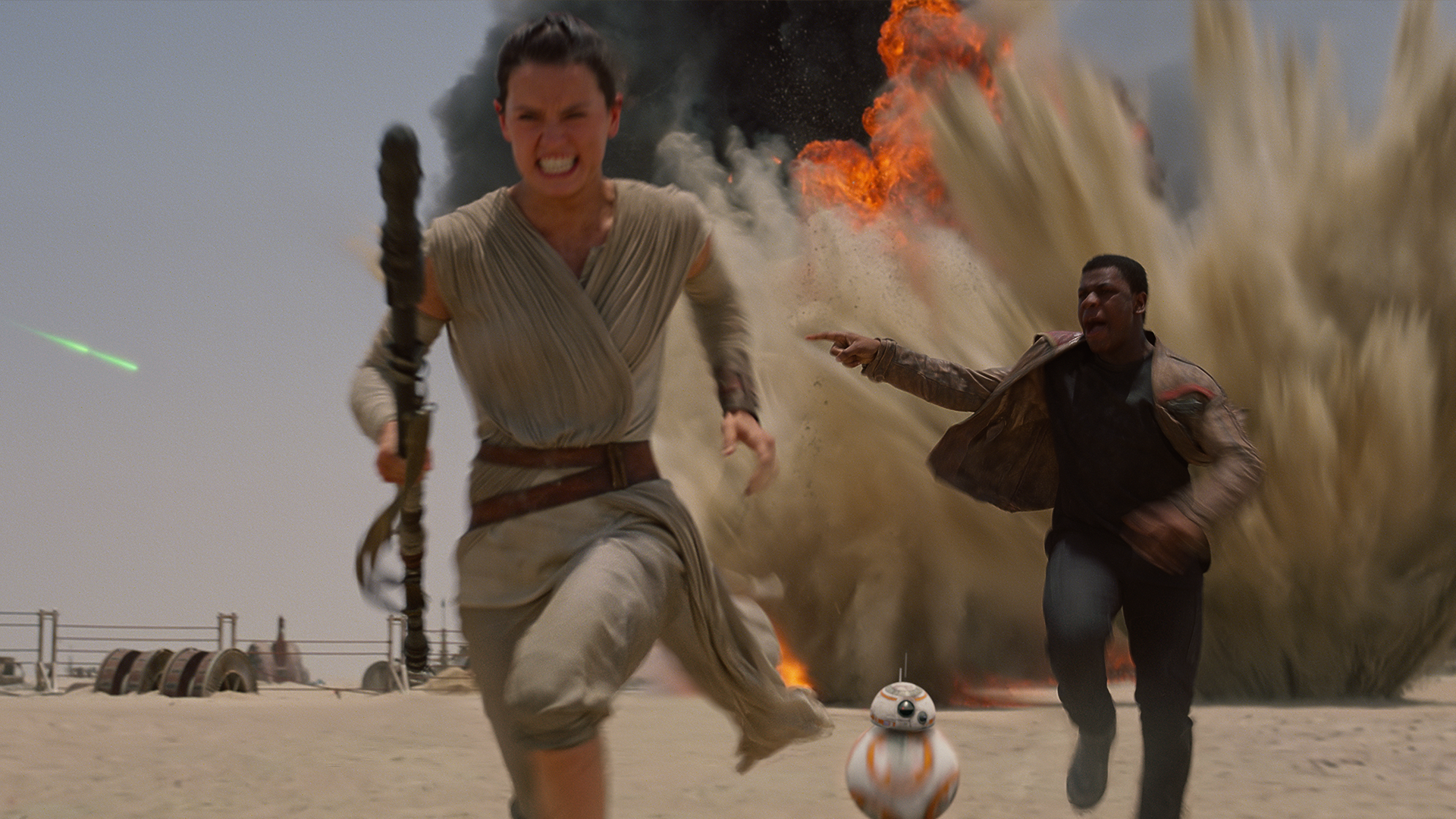Secondary Home-schooling Activities
Learning about film and the media industry? Watch our short introductory video to learn more about the role of the BBFC and the importance of age ratings. This is a great resource if you're studying Film or Media Studies, or if you simply want to learn more about age ratings and content regulation.
It's time to test your knowledge, take our quiz
This quiz is to find out what you have learnt about the BBFC and media regulation in the UK.
Question 1:
What are the BBFC age ratings?
Question 2:
What year was the BBFC established?
Question 3:
How many hours of content do BBFC Compliance Officers watch a day?
Question 4:
How often do we update our guidelines?
Question 5:
What age rating is Black Panther?
Question 6:
Where would you find the BBFC's content advice?

The hotly anticipated sequel to one of the most successful franchises of all time arrived at the BBFC just a few days ahead of its release date on 17 December 2015.
Although it may seem unusual for the film’s distributor - Walt Disney Pictures - to submit the film for a rating so close to its release date, it’s quite common for this to happen, particularly with big blockbusters.
The distributor submitted Star Wars: The Force Awakens with a 12A category request.
The film was viewed by BBFC Compliance Officers and senior members of the BBFC who concluded that the requested rating could be issued.
On the 7 December 2015, the film was rated 12A for moderate violence and threat.
A lot of the violence in the film is likely to be very familiar to audiences, including younger children. The film features lots of exciting aerial dogfights, laser blast fights and lightsaber duels, none of which is visually detailed or results in any blood or injury detail.
However, a couple of stronger moments stood out to our compliance team, including sequences in which characters are killed with lightsabers, with sight of a laser beam protruding through a character’s body, and a moment in which a lightsaber burns against a character’s skin, causing lasting injury. Although these more detailed examples of violence are infrequent, the focus on characters’ pain and suffering in these moments place the issue of violence at 12A.
The film also contains scenes of occasional moderate threat, including during prolonged scenes of intense action violence; scenes in which characters are held at lightsaber point and interrogated using the Force also provide another example in which the film emphasises victims being in pain and anguish. As a result, we considered the threat to be category defining at 12A.
Other classification issues include infrequent use of very mild bad language (‘hell’, ‘damn’).
- Why do you think Disney requested a 12A classification? What impact do you think the rating has on the distributor’s ability to market the film to different audiences?
- Daisy Ridley and John Boyega play the film’s leading roles. At the time the film was released, neither actor was particularly familiar to mainstream audiences. How important are film stars in the marketing of blockbuster films?
- Star Wars: The Force Awakens was released 38 years after the first film - Star Wars: A New Hope - in the franchise. How important do you think it is for the film to appeal to new audiences and in what ways do you think the film tries to do this?
- The content advice for the film is ‘moderate violence, threat’. Do you think this is likely to confound audience expectations?
- The film’s antagonist Kylo Ren is torn between using the Force for good or evil. Is he a villain? How does his character inform the film’s theme of ‘good vs. evil’?’
Put your knowledge to the test and have a go at age rating something yourself
Olivia Wilde’s directorial debut rips apart the gross-out teen movie rule book by having two female protagonists at the centre of the narrative. The film is rated 15 for strong sex references, language, sex and drug misuse. These classification issues are quite typical of the genre and are unlikely to challenge audience expectation. However, this trailer for the film is not as strong and doesn’t raise the same kind of classification issues as the main feature.
Take a look and see what classification issues you can spot in the trailer. Why do you think the distributor wanted to produce a trailer that has a lower classification than the 15 rating? Think about the extent to which the trailer challenges audience and genre expectations.
Remember that the BBFC is a little stricter when rating trailers as opposed to features. This is because trailers are exhibited to audiences in an unbidden context.